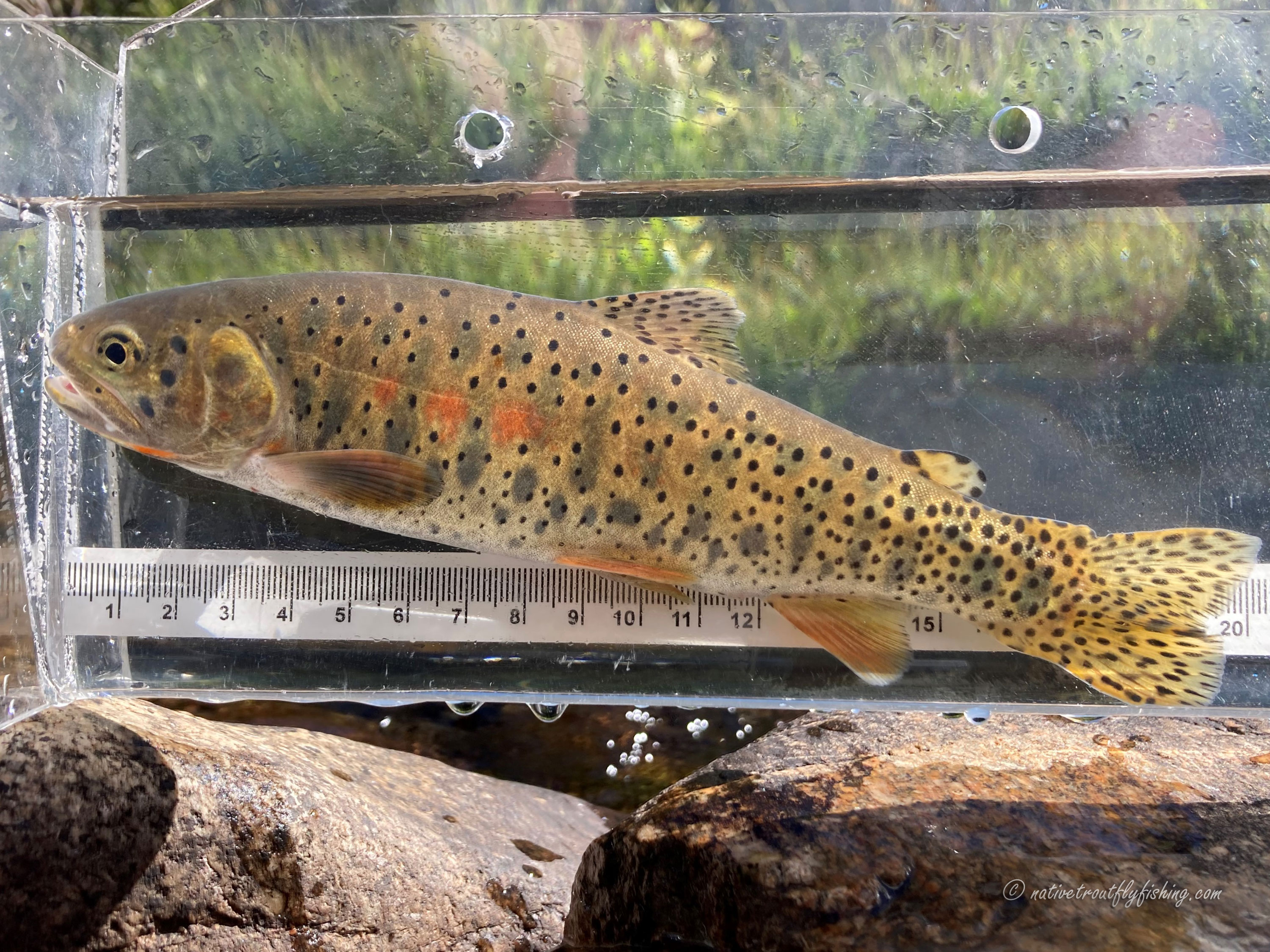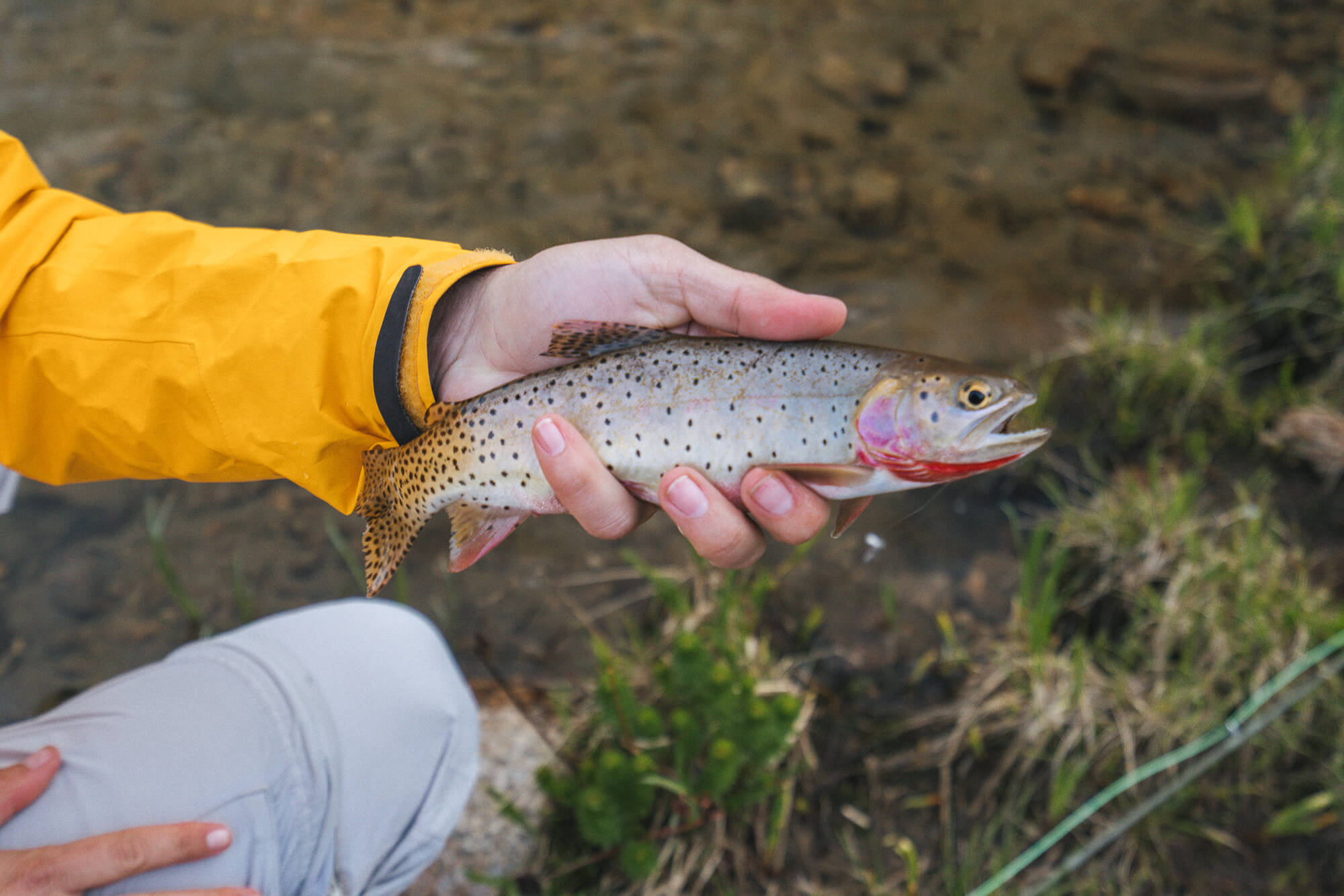

For example, as the water heats up during the summer, the cutthroat moves deeper. While this trout can be fished all year, its location varies as the water temperature rises and drops.

You can use leeches, worms, and minnows to attract them. You don’t need any special baits, flies, or lures, though. If you are fishing for large coastal cutthroats, baitcasting should be your preferred fishing technique. However, generally speaking, you can get away with using a six-and-a-half-foot-long medium-action spinning rod and spinning reel. The best tackle to catch this fish depends on the technique you use. Just make sure that you have a variety of small spinners and spoons that have a slight sheen to them. There is nothing in particular that you will need to catch cutthroats. Use this to fish deep during the summer and in the shallows during spring. One of the best patterns to use while fishing for this trout is the stickleback, black and silver flatfish, and the black wooly bugger. Use a 4 to 7-weight graphite rod that is about 8 to 9 feet long. You may end up catching salmon and other species of fish instead of your flies. While most cutthroats do not get very large, making a light tackle preferable, only use it for the smallest streams. Like most trout, cutties feed on aquatic insects and invertebrates as well as land insects that fall into the water such as ants, hoppers, beetles, etc.Īnother beautiful Colorado cutthroat. This is also why there is a range of flies that are effective to catch this fish. You may need to cast several times in the same area to get a bite.Ĭutthroat trout can eat just about anything that you can cast onto a river, making them perfect for fly fishing. During the early season, fish for cutthroats in shallow water or shelves in lakes and pools and be patient.Cutthroats are not picky eaters, so make sure you have a variety of well-known imitator-type patterns for nymphs and dries.However, environments will vary, and your angling should reflect this swell as the species of Cutthroat the reader is pursuing. Use fly patterns that imitate ocean bait fish to fish for cutthroats in brackish water, such as char, salmon, and shrimp.Īn ambush predator, the Cutthroat Trout can be found lurking in hiding sites such as log jams, eddies, large boulders, and other submerged structures, lying in wait for its next meal.This will fool the cutthroats into biting. If you are fishing with dry flies, use a Stimulator dry fly, especially if natural stoneflies are flying about.Imitation nymphs and larvae may be employed as bait, such as the Bead Head Pheasant tail lure or Zebra Midge Flies, to great effect. Some people also like to use dry fly patterns that look like stoneflies and mayflies while fly-fishing for cutthroat trout.Īquatic nymph and larvae are a staple in the Cutthroat Trout’s diet and can be found just beneath the water’s surface. Use imitation nymphs as bait, such as the Bead Head Pheasant tail, to lure them out in sizes 12 to 14. Westslope cutthroat – These originate from Northern Idaho and the northern tributaries of the Snake River.Ĭutthroats love to feast on aquatic nymphs and larvae which can be found just below the surface of the water.Coastal cutthroat – This cutthroat spends most of their lives in coastal regions of the Pacific Ocean and return to native rivers for spawning.Yellowstone cutthroat – This cutthroat can be found around Yellowstone National Park, and this includes subspecies such as the fine spotted cutthroat.



 0 kommentar(er)
0 kommentar(er)
